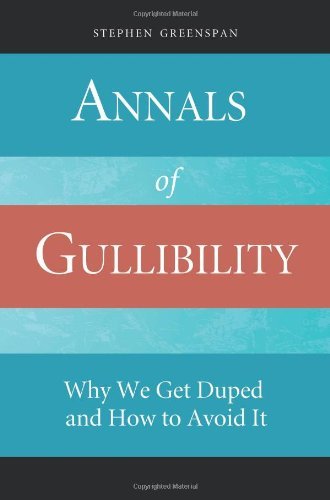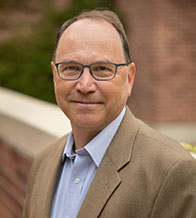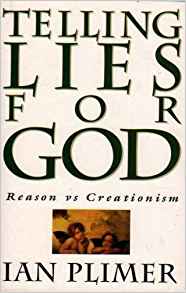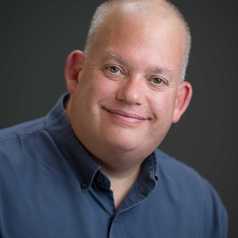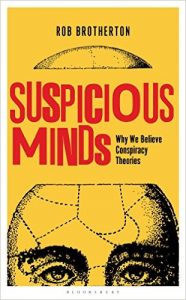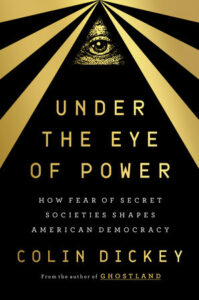
. . . he told me that while she wasn’t a stupid person, he described her as “someone who’s always had trouble finding a place in life, in terms of career and goals, and what her wants are and what her drives are. And as a result, she’s always been—as smart as she is—easily pulled into various groups and things. . . . The Deep State narrative, Eric felt, was attractive to her because it explained things to her “on some sort of abstract level as somebody who’s just sort of struggled to find their place in the world.
Colin Dickey, Under the Eye of Power — all excerpts from Apple Books
That passage reminded me of what I had read about the appeal of Donald Trump back in 2016: Understanding Trump’s Rise, Presidency — and a Positive Resolution to the Crisis — It painfully reminded me, too, of so much I have come to learn (and share in many posts here) about the appeal of cults, terrorist groups and suicide bombers. The same process of radicalization appears to me to be common to all.
We are family
As Miranda lost some of her friends, they were replaced by another community, one online that not only provided support and reassurance, but welcomed her as a soldier in a tremendous battle. “Take up this cause, because it’s the right cause—here’s all these people who know this is the right cause and will back you up and believe the same things that you do. And it’s got the extra bonus of ‘You’re special,’ on top of it, because “most of the world doesn’t even know that this is happening.”
The problem with dismissing “these people”
This attitude—that on some level we are being manipulated by deceitful journalists, and our emotions are being tweaked by social media algorithms, creating a landscape where conspiracy theories are allowed to flourish as they never have before—is a common one. But it creates a picture where conspiracy believers are themselves oddly passive: they are blank slates, onto which Fox and Facebook project harmful content, and, like children, they are powerless to resist. In the same way that Christian moralists argued that listening to heavy metal would lead impressionable teenagers to become Satanists, we have come to believe that social media companies like Facebook are so powerful that merely logging on can transform someone from a rational, thinking human being into a conspiracy obsessed paranoiac.
This argument has the benefit of offering a reassuring narrative to those of us not in journalism or on the board of Facebook: it’s not my fault I was exposed to this disinformation, I’m a passive consumer. Focusing on algorithms, on social media giants, and on journalists all has the soothing effect of encouraging us to see ourselves as powerless, passive receivers of information, rather than people who actively are shaping our reality.
As Twitter’s cofounder Evan Williams put it in 2017, there is a problem with the Internet, in that it rewards extremes. “Say you’re driving down the road and see a car crash. Of course you look. Everyone looks. The Internet interprets behavior like this to mean everyone is asking for car crashes, so it tries to supply them.” Which is to say, of course the Internet enables our worst behavior. But the behavior is ours to begin with. We believe things not just because Facebook feeds them to us; we believe them because we want to.
This emphasis on social media and the Internet also opens up space for the belief that a movement like QAnon is somehow new, something that has appeared from nowhere, a spontaneous upswelling of paranoia and ignorance. As should also be evident by now, conspiracy theories have been a hallmark of American democracy from its inception. Conspiracy theories—particularly those surrounding politics, which inevitably includes fears of secret groups—have been used time and time again to ameliorate unreconcilable contradictions that spur cognitive dissonance. A vital fact about QAnon necessary to understanding its allure is that it is neither sui generis—it is not some unique and abnormal thing unlike anything in America’s history—nor is it ex nihilo—it didn’t spring from nothing. Conspiracy belief has repeatedly caused riots and murders, ruined lives and careers, and reshaped America time and time again since its inception—as horrible as the past few years have been, they are part of a repeating pattern.
Something new this time
Why was the need to believe this narrative so strong among QAnon adherents that they were willing to buy a story with such a laughably improbable origin?
QAnon did offer one seemingly new aspect: an interactive component. As Mike Rothschild explains in his book The Storm Is Upon Us: How QAnon Became a Movement, Cult, and Conspiracy Theory of Everything, “Q talks directly to the people, and the people talk back to Q. It’s not monologing, it’s dialogue. Q encourages collaboration, and rewards anons who go above and beyond in their theorizing and interpretation.” QAnon mirrored the structure of true crime Reddit forums and other online communities, where amateur sleuths could build their own epistemic capital by connecting the dots and sharing their findings with others.
Waiting … doing nothing …
. . . echoes of another long-standing American tradition: prophecy behavior. “Watching, waiting, and working for the millennium,” . . .
Facts alone rarely persuade
But for those who are in a position to combat these delusions and conspiracy beliefs, it’s important to note that it involves more than simply fact-checking. While factual debunking is vital, it remains less important than first understanding the psychological need that drives the conspiracist to seek out alternative stories.
Often, as Miranda’s story suggests, believers are looking for purpose, and conspiracy theorists—like cult leaders—don’t look for unintelligent people so much as they look for directionless people, people lacking meaning and purpose, who’ve lost family ties (at one point, Eric said of Miranda that she disliked the fact that she lived so far from her family in Florida, even though she came to California in part because she never quite fit in with them in the first place). As tempting as socially isolating these people may be, it’s the kind of behavior that becomes a vicious circle, driving them further into the arms of a community that welcomes them and nurtures feelings of victimhood and persecution. Whatever ability we have to try to reintegrate these people into other arenas of social life helps break that cycle.
In addition to community, conspiracy groups offer adherents a simplified narrative to dispel chaos in one’s life. They may also provide a cover story to justify racist, homophobic, and transphobic beliefs, ideas that a person may believe but feel they can’t publicly display. Such theories liberate believers and encourage a kind of free play for forbidden thoughts.
The eternal return
But a good part of the reason why such problems never get solved is due to the way they’re allowed to fade into obscurity almost as soon as the heat of the moment has passed. The prevalence of such moments depends on the destruction of a communal memory of these past outrages, a constant culture of forgetting, an almost state-sponsored amnesia designed to treat each emerging moral panic as entirely new.
Dickey, Colin. Under the Eye of Power: How Fear of Secret Societies Shapes American Democracy. New York, NY: Viking, 2023.

